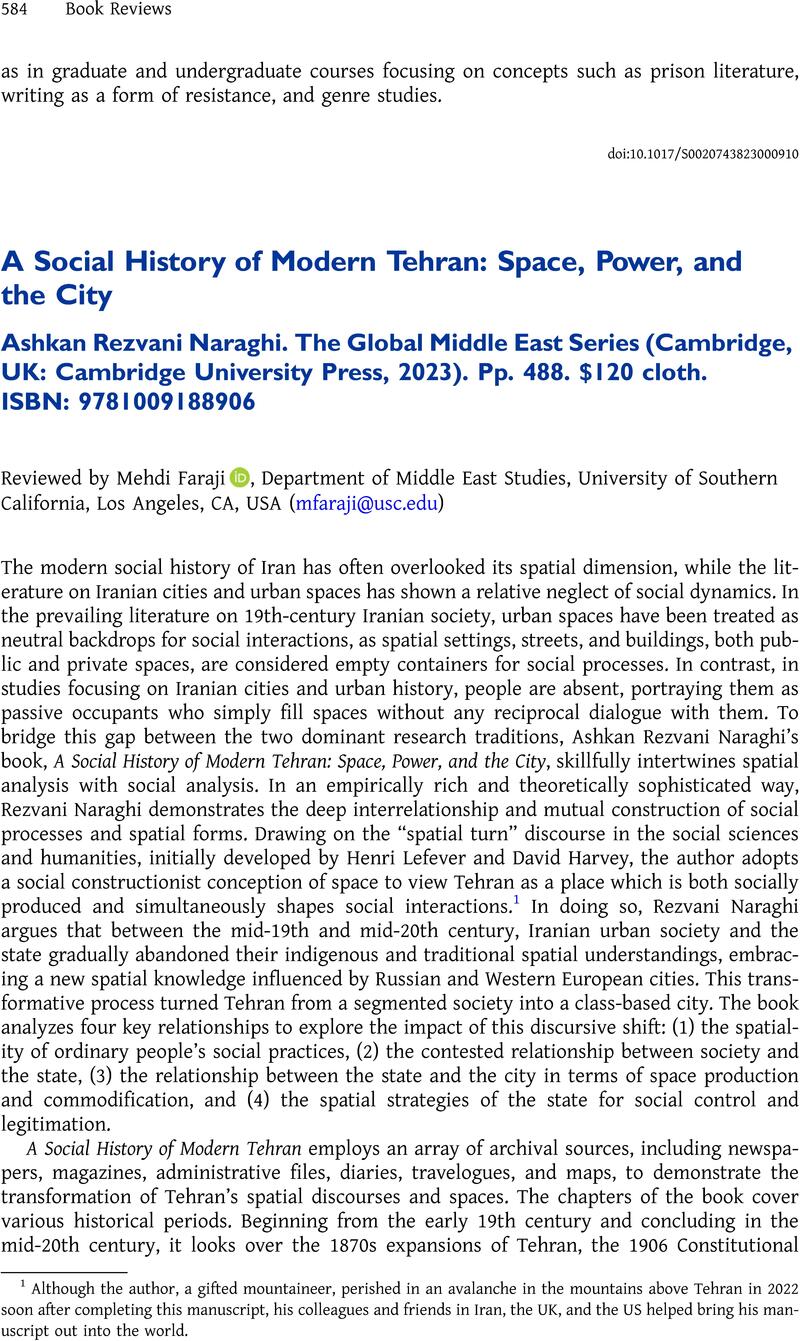No CrossRef data available.
Article contents
A Social History of Modern Tehran: Space, Power, and the City Ashkan Rezvani Naraghi. The Global Middle East Series (Cambridge, UK: Cambridge University Press, 2023). Pp. 488. $120 cloth. ISBN: 9781009188906
Review products
A Social History of Modern Tehran: Space, Power, and the City Ashkan Rezvani Naraghi. The Global Middle East Series (Cambridge, UK: Cambridge University Press, 2023). Pp. 488. $120 cloth. ISBN: 9781009188906
Published online by Cambridge University Press: 14 September 2023
Abstract
An abstract is not available for this content so a preview has been provided. Please use the Get access link above for information on how to access this content.

- Type
- Book Review
- Information
- Copyright
- Copyright © The Author(s), 2023. Published by Cambridge University Press
References
1 Although the author, a gifted mountaineer, perished in an avalanche in the mountains above Tehran in 2022 soon after completing this manuscript, his colleagues and friends in Iran, the UK, and the US helped bring his manuscript out into the world.



